Michigan's congressional districts

Michigan is divided into 14 congressional districts, each represented by a member of the United States House of Representatives.[2]

The districts are currently represented in the 117th United States Congress by 7 Democrats and 7 Republicans.
Due to considerable demographic and population change in Michigan over the years, an individual numbered district today does not necessarily cover the same geographic area as the same numbered district before reapportionment. For example, Pete Hoekstra and Bill Huizenga have represented the 2nd district since 1993, but are considered the "successors" of Guy Vander Jagt, since the current 2nd covers most of the territory represented by Vander Jagt in the 9th district before 1993.
Starting in the 2022 mid-term elections, per the 2020 United States census, Michigan will lose a congressional seat.[3]
Current districts and members[]
List of members of the House delegation, time in office, district maps, and the districts' political ratings according to the CPVI. The delegation has 14 members, including 7 Republicans and 7 Democrats.
| District | Incumbent | District | |||
|---|---|---|---|---|---|
| Member (Residence) |
Party | Time in office[a] | CPVI | Location | |
| 1st |  Jack Bergman (Watersmeet) |
Republican | January 3, 2017 - Present | R+12 | 
|
| 2nd |  Bill Huizenga (Holland) |
Republican | January 3, 2011 - Present | R+9 | 
|
| 3rd |  Peter Meijer (Grand Rapids) |
Republican | January 3, 2021 - Present | R+5 | 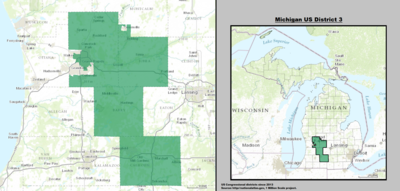
|
| 4th | 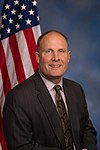 John Moolenaar (Midland) |
Republican | January 3, 2015 - Present | R+14 | 
|
| 5th |  Dan Kildee (Flushing) |
Democratic | January 3, 2013 - Present | D+1 | 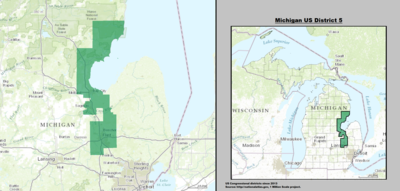
|
| 6th |  Fred Upton (St. Joseph) |
Republican | January 3, 1987 - Present | R+5 | 
|
| 7th |  Tim Walberg (Tipton) |
Republican | January 3, 2011 - Present | R+10 | 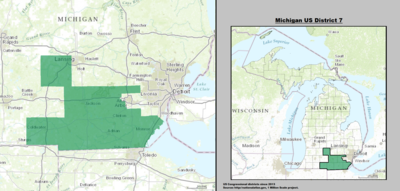
|
| 8th |  Elissa Slotkin (Holly) |
Democratic | January 3, 2019 - Present | R+4 | 
|
| 9th |  Andy Levin (Bloomfield Township) |
Democratic | January 3, 2019 - Present | D+4 | 
|
| 10th |  Lisa McClain (Bruce) |
Republican | January 3, 2021 - Present | R+18 | 
|
| 11th |  Haley Stevens (Rochester Hills) |
Democratic | January 3, 2019 - Present | R+2 | 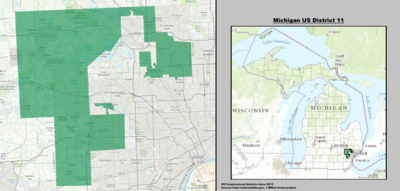
|
| 12th |  Debbie Dingell (Dearborn) |
Democratic | January 3, 2015 - Present | D+13 | 
|
| 13th | 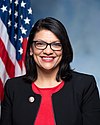 Rashida Tlaib (Detroit) |
Democratic | January 3, 2019 - Present | D+29 | 
|
| 14th | 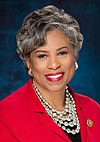 Brenda Lawrence (Southfield) |
Democratic | January 3, 2015 - Present | D+29 | 
|
Historical district boundaries[]
Below is a table of United States congressional district boundary maps for the State of Michigan, presented chronologically forward.[4] All redistricting events that took place in Michigan in the decades between 1973 and 2013 are shown.
| Year | Statewide map | Congressional delegation |
|---|---|---|
| 1973–1982 | 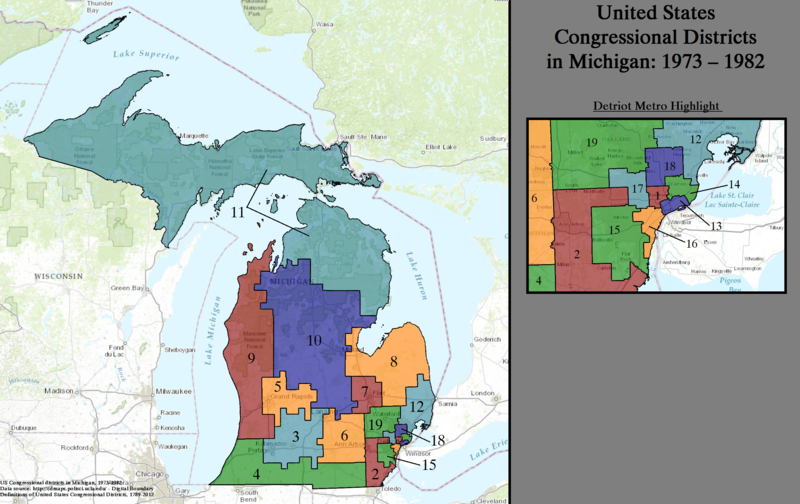
|
1/3/1973–1/3/1974: 7 Democrats, 12 Republicans
1/3/1974–1/3/1975: 9 Democrats, 10 Republicans 1/3/1975–1/3/1977: 12 Democrats, 7 Republicans 1/3/1977–1/3/1979: 11 Democrats, 8 Republicans 1/3/1979–1/3/1981: 13 Democrats, 6 Republicans 1/3/1981–1/3/1983: 12 Democrats, 7 Republicans |
| 1983–1992 | 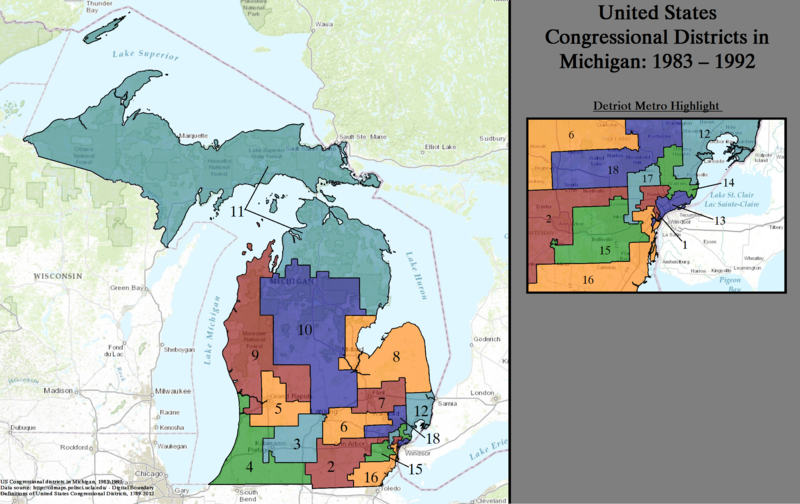
|
1/3/1983–1/3/1985: 12 Democrats, 6 Republicans
1/3/1985–1/3/1987: 11 Democrats, 7 Republicans 1/3/1987–1/3/1989: 11 Democrats, 7 Republicans 1/3/1989–1/3/1991: 11 Democrats, 7 Republicans 1/3/1991–1/3/1993: 11 Democrats, 7 Republicans |
| 1993–2002 |  Note: The orange 6th is mislabeled; it should read 13th. |
1/3/1993–1/3/1995: 10 Democrats, 6 Republicans 1/3/1995–1/3/1997: 9 Democrats, 7 Republicans 1/3/1997–1/3/1999: 10 Democrats, 6 Republicans 1/3/1999-1/3/2001: 10 Democrats, 6 Republicans 1/3/2001-1/3/2003: 9 Democrats, 7 Republicans |
| 2003–2013 | 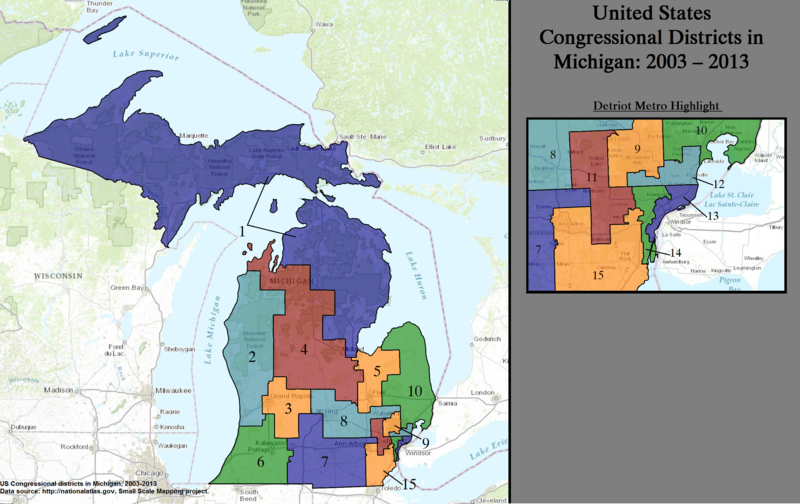
|
1/3/2003-1/3/2005: 6 Democrats, 9 Republicans
1/3/2005-1/3/2007: 6 Democrats, 9 Republicans 1/3/2007-1/3/2009: 6 Democrats, 9 Republicans 1/3/2009-1/3/11: 8 Democrats, 7 Republicans 1/3/2011–7/6/2012: 6 Democrats, 9 Republicans 7/6/2012-11/6/2012: 6 Democrats, 8 Republicans, 1 Vacant seat 11/6/2012-1/3/2013: 7 Democrats, 8 Republicans |
| Since 2013 | 
|
1/3/2013–1/3/2015: 5 Democrats, 9 Republicans
1/3/2015–1/3/2017: 5 Democrats, 9 Republicans 1/3/2017-1/3/2019: 5 Democrats, 9 Republicans 1/3/2019-7/4/2019: 7 Democrats, 7 Republicans 7/4/2019-5/4/2020: 7 Democrats, 6 Republicans, 1 Independent[5] 5/4/2020-12/14/2020: 7 Democrats, 6 Republicans, 1 Libertarian[6] 12/14/2020–1/3/2021: 7 Democrats, 5 Republicans, 1 Libertarian, 1 independent[7] 1/3/2021–present: 7 Democrats, 7 Republicans |
Obsolete districts[]
- Michigan's at-large congressional district
- Michigan's 15th congressional district
- Michigan's 16th congressional district
- Michigan's 17th congressional district
- Michigan's 18th congressional district
- Michigan's 19th congressional district
See also[]
- United States congressional delegations from Michigan
- List of United States congressional districts
- Michigan congressional districts Democrat chairs
- Michigan congressional districts Republican chairs
Notes[]
- ^ "Time in office" reflects each member's time since becoming a member, not the member's time since becoming a member for the current district. Redistricting commonly results in a district being moved elsewhere in the state and its representative beginning to represent a different district in the same location.
References[]
- ^ "The national atlas". nationalatlas.gov. Archived from the original on February 22, 2014. Retrieved February 22, 2014.
- ^ "Directory of Representatives". The United States House of Representatives. Retrieved March 8, 2013.
- ^ Merica, Dan; Stark, Liz (April 26, 2021). "Census Bureau announces 331 million people in US, Texas will add two congressional seats". CNN. Retrieved April 26, 2021.
- ^ "Digital Boundary Definitions of United States Congressional Districts, 1789–2012". Retrieved October 18, 2014.
- ^ "Rep. Justin Amash declares his independence from the Republican Party". July 4, 2019.
- ^ "Rep. Justin Amash Becomes First Libertarian Member of Congress".
- ^ Correspondent, Jake Tapper, Anchor and Chief Washington. "Congressman cites Trump's efforts to overturn election in announcing decision to quit GOP". CNN. Retrieved December 16, 2020.
External links[]
- Rose Institute of State and Local Government, "Michigan: 2010 Redistricting Changes", Redistricting by State, Claremont, CA: Claremont McKenna College
- Congressional districts of Michigan